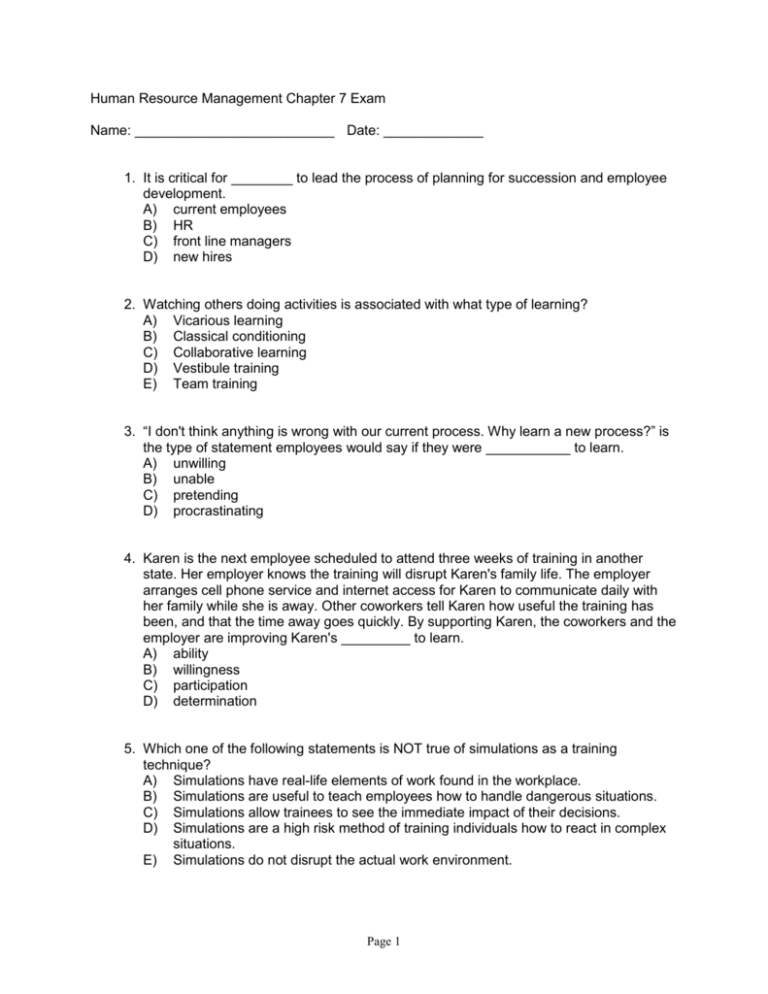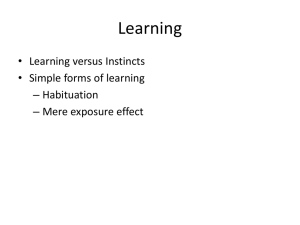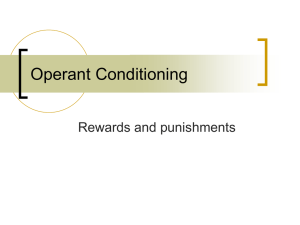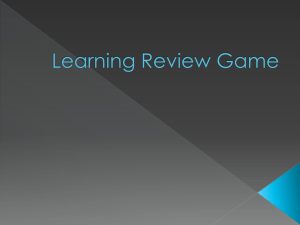Chapter 7
advertisement

Human Resource Management Chapter 7 Exam Name: __________________________ Date: _____________ 1. It is critical for ________ to lead the process of planning for succession and employee development. A) current employees B) HR C) front line managers D) new hires 2. Watching others doing activities is associated with what type of learning? A) Vicarious learning B) Classical conditioning C) Collaborative learning D) Vestibule training E) Team training 3. “I don't think anything is wrong with our current process. Why learn a new process?” is the type of statement employees would say if they were ___________ to learn. A) unwilling B) unable C) pretending D) procrastinating 4. Karen is the next employee scheduled to attend three weeks of training in another state. Her employer knows the training will disrupt Karen's family life. The employer arranges cell phone service and internet access for Karen to communicate daily with her family while she is away. Other coworkers tell Karen how useful the training has been, and that the time away goes quickly. By supporting Karen, the coworkers and the employer are improving Karen's _________ to learn. A) ability B) willingness C) participation D) determination 5. Which one of the following statements is NOT true of simulations as a training technique? A) Simulations have real-life elements of work found in the workplace. B) Simulations are useful to teach employees how to handle dangerous situations. C) Simulations allow trainees to see the immediate impact of their decisions. D) Simulations are a high risk method of training individuals how to react in complex situations. E) Simulations do not disrupt the actual work environment. Page 1 6. Competency models are based on the ________ we want employees to have. A) attitudes B) competencies C) production D) relationships 7. Tony thought the boss would not notice if Tony took a 2-hour lunch break when the work pace was slow. Tony was wrong. The boss was livid and reprimanded Tony in front of the entire team. As a result, Tony always makes sure he is back from his lunch break on-time. What Tony experienced was _________ A) classical conditioning B) operant conditioning C) social learning D) positive reinforcement 8. In anticipation of tax season, Micah is working with the organization's tax preparers to determine their knowledge of current tax laws. Micah's goal is to make sure the tax preparers can deliver excellent customer service in alignment with the company's goals. If she finds they cannot provide this service, she will implement training to bring everyone up to speed. What Micah is conducting a _________. A) competency model B) remediation C) training D) needs assessment 9. A manager decides to give a worker three days of unpaid leave for smoking in a dynamite factory. What kind of behavior shaping was provided here? A) Positive reinforcement B) Negative reinforcement C) Alternative reinforcement D) Punishment E) Extinction 10. Career entry, building skills, and work relationships develop in what career stage? A) Maintenance B) Administration C) Disengagement D) Exploration E) Establishment Page 2 11. Aziz sent all his employees to training on project management. Afterward, Aziz collected data on the time each project took to complete and how much was spent on each project. He compared that data to the same information from before his employees attended training. Aziz was completing a _________ assessment of training. A) reaction B) learning C) behavior D) results 12. If a ________________ is not done correctly, a training course may be poorly designed, or it may cover the wrong information. A) new hire survey B) metrics analysis C) personality inventory D) needs assessment 13. ______ is the process of teaching employees the skills necessary to perform a job. A) Employee development B) Career management C) Training D) Instructional design E) Observation 14. _______ reinforcement is a reward for a constructive action. A) Positive B) Negative C) Alternative D) Egalitarian E) Temporary 15. The type of learning is associated with direct, voluntary learned behaviors is: A) Classical conditioning B) Environmental conditioning C) Behavioral conditioning D) Operant conditioning E) Vicarious learning 16. ______ is the last step in the training process. A) Designing training B) Assessing training C) Assessing needs D) Analyzing content E) Delivering training Page 3 17. All of the following except one can negatively affect willingness to participate in training. Which one does not? A) Current methods and processes are sufficient B) They don't see a relationship between the training and their job C) They feel the training is being done for political reasons D) Support from family and coworkers E) The trainee feels no need to learn new processes 18. Readiness for training is a combination of: A) Concern And Empathy. B) Ability And Willingness. C) Opportunity And Conscientiousness. D) Socialization And Guidance. E) Support And Ability. 19. Patrico is looking for a method of training his employees for complex situations. He would like a method that allows employees to try out experimental solutions to a problem and receive feedback on how they did. Patrico's best choice of training method would be ________ training. A) on-the-job B) classroom C) distance D) simulation 20. Bill and Monica are asked to act out a sexual harassment situation to develop skill in handling such situations. What type of training is this? A) Behavior modeling B) Role-playing C) Case study D) Assessment learning E) Project learning 21. According to Kolb's Learning Style Methodology, who combines observing and feeling? A) Assimilators B) Convergers C) Divergers D) Observers E) Accommodators Page 4 22. As a new employee at Acme Global, Frederick just spent the morning learning about the organization's policies and procedures. He went to lunch with his new co-workers and spent the afternoon filling out forms with the human resource department. What Frederick experienced was ________. A) development B) orientation C) training D) remediation 23. A typical orientation program is LEAST likely to include: A) An overview of the company's history, values, and mission. B) A department tour and introductions to department employees. C) Salary data relating to management positions within the company. D) A review of organizational policies and procedures. E) Information relating to the community, housing, and family adjustment issues. 24. John reached his sales goal for the first quarter of the year and earned a bonus. What John experienced was __________. A) positive reinforcement B) punishment – give bad consequence C) punishment – remove reward D) negative reinforcement 25. What is the last stage of Maslow's Hierarchy of Needs? A) Esteem B) Self-actualization C) Social D) Physiological E) Safety/Security Page 5








